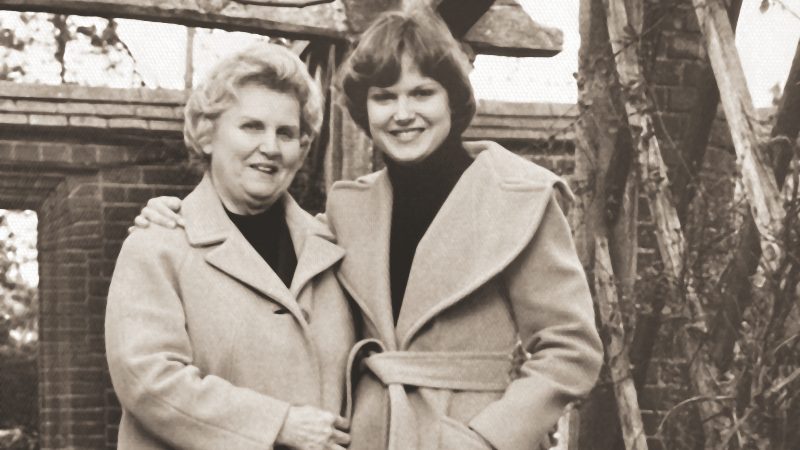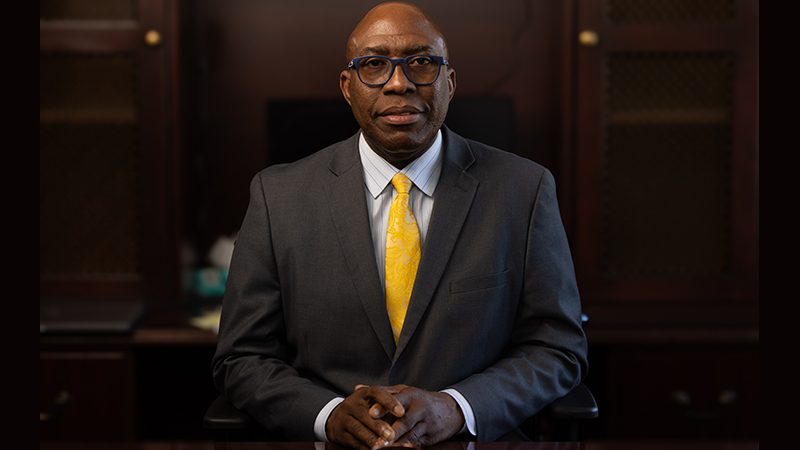
Most people would not choose the Christmas season to visit the small town of Washington, New Hampshire—home of the first Sabbath-keeping Adventist congregation. Even today, the old road that leads to the site of the historic church is not maintained during the winter months.
However, during the week of Christmas 1867, James and Ellen White, accompanied by J.N. Andrews, visited the site for revival meetings.
It was at this church, in the spring of 1844, that Rachel Oakes (later known as Rachel Preston), a Seventh-day Baptist, first brought the truth of the Sabbath to the Adventist believers. Frederick Wheeler, a Sunday-observant Methodist, with whom Rachel shared the Sabbath doctrine, was serving at that time as a minister there. William Farnsworth, a local farmer and father of 22, became the first to publicly accept the seventh-day Sabbath when Pastor Wheeler introduced him to the congregation.

But all that had taken place almost a quarter of a century before this Christmas week of revival. Pastor Wheeler had moved to New York state. With his departure, the spiritual condition of the Washington congregation had deteriorated. Regular worship had been discontinued, and William Farnsworth, the early Sabbath adopter, had secretly reverted to his old habit of chewing tobacco.
Revival meetings began on the Saturday before Christmas Day. Some meetings were held in the church; others were held in the house of Cyrus Farnsworth, William's younger brother.
The Monday morning meeting took place at the church and lasted five hours. During the meeting, Ellen White addressed one person after another in the congregation. She pointed out some problems they had in their lives that had been shown to her in vision. A young sister, "loved by God, but living in servile slavery," was advised that she should maintain her individuality and not submit her convictions to the whims of her unsaved husband. The condition of apostasy in which a young woman lived was presented as a result of her association with another unsaved young man.
A man was present that day who had not been accepted into the local congregation. Ellen White pointed out that the "God who searches hearts" was better pleased with the conduct of this man than with the lives of some in the church who refused to admit him to the congregation.


While the service was going on, Eugene Farnsworth, 19 years old and son of William, thought to himself, How I wish she would address my father's case. Almost as if in answer to his unexpressed wishes, Mrs. White turned to William Farnsworth and said, "I was shown that this brother is a slave to tobacco. But the worst part is that he acts like a hypocrite, trying to deceive his brothers by saying that he has abandoned it, just as he promised by joining the church."
Ellen White pointed out that the "God who searches hearts" was better pleased with the conduct of this man than with the lives of some in the church who refused to admit him to the congregation.
Eugene knew very well that his father chewed tobacco again. While working together in the woods, he had seen the telltale brown spots under the white snow that his father had thrown on them in an effort to hide them. Eugene was not the only young man in the church who had become discouraged because of the inconsistency in the lives of adult members. But as he heard the hidden sins pointed out by Mrs. White, he became convinced that he was witnessing the prophetic gift in action.
When she finished her message, Ellen White sat down and gave the church members a chance to speak. One after another stood up and acknowledged the veracity of her revelations. This was followed by confession and repentance.
During the meetings that lasted from Saturday to Wednesday, which was Christmas Day, James and Ellen White, as well as J.N. Andrews, made earnest efforts for the conversion of the young men present. Young people, seeing their parents confessing their mistakes, were visibly moved. At the morning meeting on Christmas Wednesday, 15 young people expressed their desire to be Christian. Later, five others who had not been present also converted.
Many of these young men wanted to be baptized immediately, so a hole was dug in the ice that covered the water near Millan Pond, and 12 were baptized. Six others waited until the following spring. Of that group of 18 young people, eventually nine were church workers. Eugene Farnsworth became an Adventist evangelist, while others became ministers, Bible instructors, and missionaries. The results of those meetings held during Christmas 1867 will extend into eternity.

_____________________________
Teobaldo Montagut is a freelance writer from
San Diego, California.
Una blanca navidad

La mayoría de gente no escogería la época de la Navidad para visitar el pequeño pueblo de Washington, New Hampshire —lugar de la primera congregación de adventistas guardadores del sábado. Y a propósito, a la carretera un tanto sucia que conduce al sitio donde está la histórica iglesia, ya vetusta, aun hoy no se le da mantenimiento durante los meses de invierno.
No obstante, durante la semana de la Navidad de 1867, James y Ellen White, acompañados por J. N. Andrews, visitaron ese lugar para celebrar unas reuniones de reavivamiento.
Fue a la iglesia de Washington que en la primavera de 1844, Rachel Oakes (más tarde conocida como Rachel Preston), una bautista del séptimo día, trajo por primera vez la verdad del sábado. Frederick Wheeler, un metodista observador del domingo, con quien Rachel compartió la doctrina del sábado, servía por aquel tiempo como ministro en ese lugar. William Farnsworth, un granjero del lugar, padre de 22 hijos, se convirtió en el primero en aceptar públicamente el sábado, cuando el pastor Wheeler lo presentó a la congregación.

Pero todo esto había tenido lugar casi un cuarto de siglo antes. Mientras tanto, el pastor Wheeler se había mudado al Estado de Nueva York. Con su partida, la condición espiritual de la congregación de Washington se había deteriorado. Los cultos regulares se habían descontinuado, y en particular, uno de sus miembros, Guillermo Farnsworth, había vuelto a su antiguo hábito de masticar tabaco.
Las reuniones de reavivamiento comenzaron el sábado anterior al día de la Navidad. Algunas reuniones eran celebradas en la iglesia; otras en la casa de Ciro Farnsworth, el hermano menor de Guillermo.
La reunión matutina del lunes, tuvo lugar en la iglesia y tardó cinco horas. Durante la reunión, Ellen White se dirigió a una persona tras otra en la congregación. Les señaló algunos problemas que tenían en sus vidas y que se le habían presentado en visión. Una joven hermana «amada por Dios, pero que vive en una servil esclavitud», recibió consejos de que debería mantener su individualidad y no someter sus convicciones al arbitrio de su esposo inconverso. Fue presentada la condición de apostasía en la que una joven vivía como resultado de su asociación con otro joven inconverso.
Un hombre estaba presente ese día, el cual no había sido aceptado en la feligresía de la congregación local. Ellen G. White señaló que el «Dios que escudriña los corazones»se complace mejor con la conducta de este hombre que con la vida de algunos en la iglesia, los cuales rehusan admitirlo en la feligresía.


Mientras transcurría el culto, Eugene Farnsworth, de 19 años, e hijo de William, pensaba y decía para sí, cómo me gustaría que tratara el caso de mi padre. Casi así como en respuesta a sus deseos no expresados, la señora White se dirigió a William Farnsworth y dijo: «Me fue mostrado este hermano quien es un esclavo del tabaco. Pero lo peor del caso es que él actúa como un hipócrita, tratando de engañar a sus hermanos al decir que lo ha abandonado, tal como lo prometió al unirse a la iglesia».
Ellen G. White señaló que el «Dios que escudriña los corazones» se complace mejor con la conducta de este hombre que con la vida de algunos en la iglesia, los cuales rehusan admitirlo en la feligresía.
Eugene sabía muy bien que su padre masticaba tabaco de nuevo. Mientras trabajaban juntos en el bosque había visto las delatadoras manchas cafés, en lugar de la blanca nieve que su padre había tirado sobre ellas, a fin de ocultarlas. Pero Eugene no era el único joven en la iglesia que se había desanimado a causa de la inconsistencia en la vida de los miembros adultos. Pero mientras oía los pecados ocultos que eran señalados por la señora White, llegó a estar convencido de que estaba siendo testigo del don profético en acción.
Cuando terminó su mensaje, Ellen G. White se sentó y dio la oportunidad a los hermanos para hablar. Uno tras otro se levantaron reconociendo la veracidad de sus revelaciones. Esto fue seguido por confesión y arrepentimiento.
Durante las reuniones que tardaron desde el sábado hasta el miércoles, que fue el día de la Navidad, James y Ellen White, así como J. N. Andrews, hicieron fervientes esfuerzos para la conversión de los jóvenes presentes. Los jóvenes al ver a sus padres confesando sus errores, fueron movidos visiblemente. En la reunión matutina del miércoles de Navidad, 15 jóvenes expresaron su deseo de ser cristianos. Más tarde, otros cinco que no estuvieron presentes, también se convirtieron.
Muchos de esos jóvenes quisieron ser bautizados inmediatamente, así que se cavó un hoyo en el hielo que cubría el agua cerca de Millan Pond, y 12 fueron bautizados. Otros seis esperaron hasta la siguiente primavera. De ese grupo de 18 jóvenes, a lo menos eventualmente, nueve fueron obreros de la iglesia. Eugene Farnsworth llegó a ser un evangelista adventista, mientras que otros llegaron a ser ministros, instructoras bíblicas y misioneros. Los resultados de aquellas reuniones celebradas en la Navidad de 1867, sin duda se extenderán hasta la eternidad.







